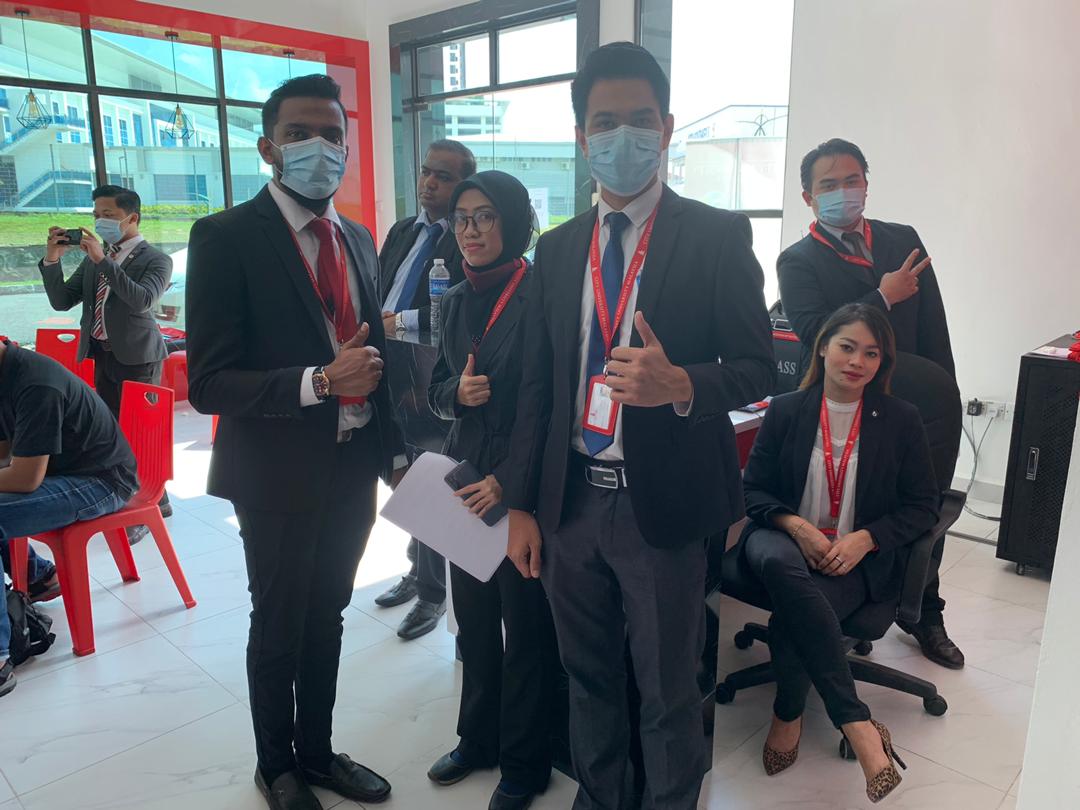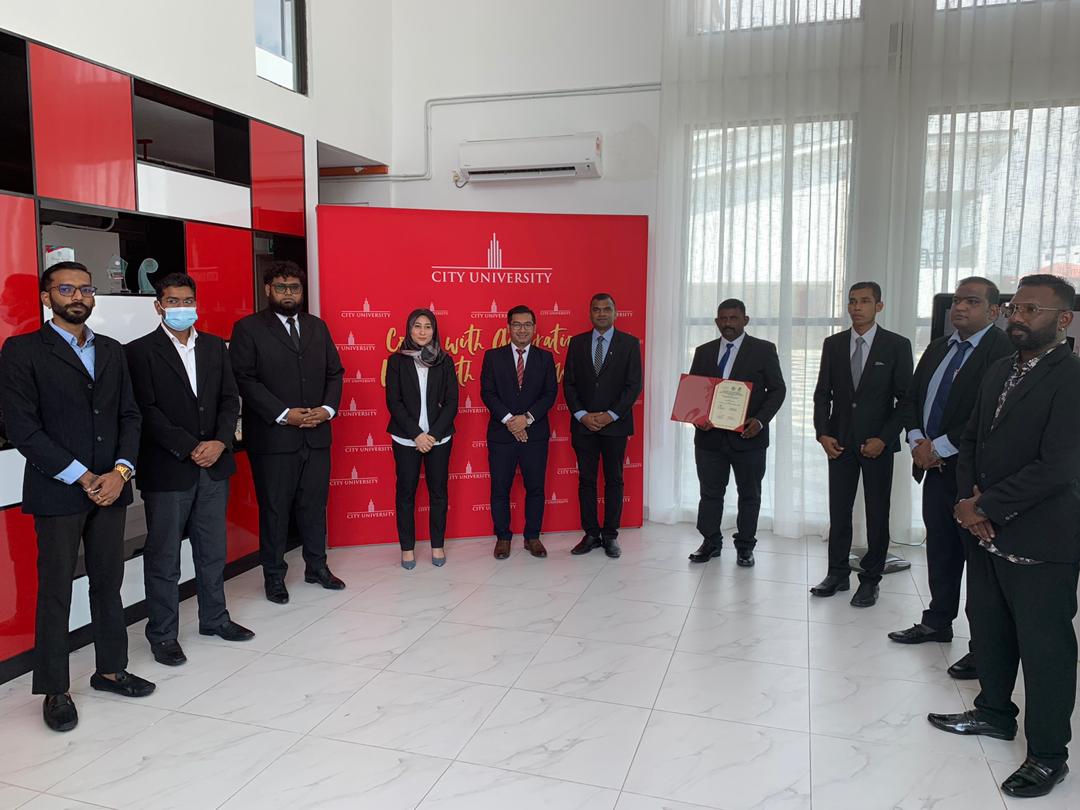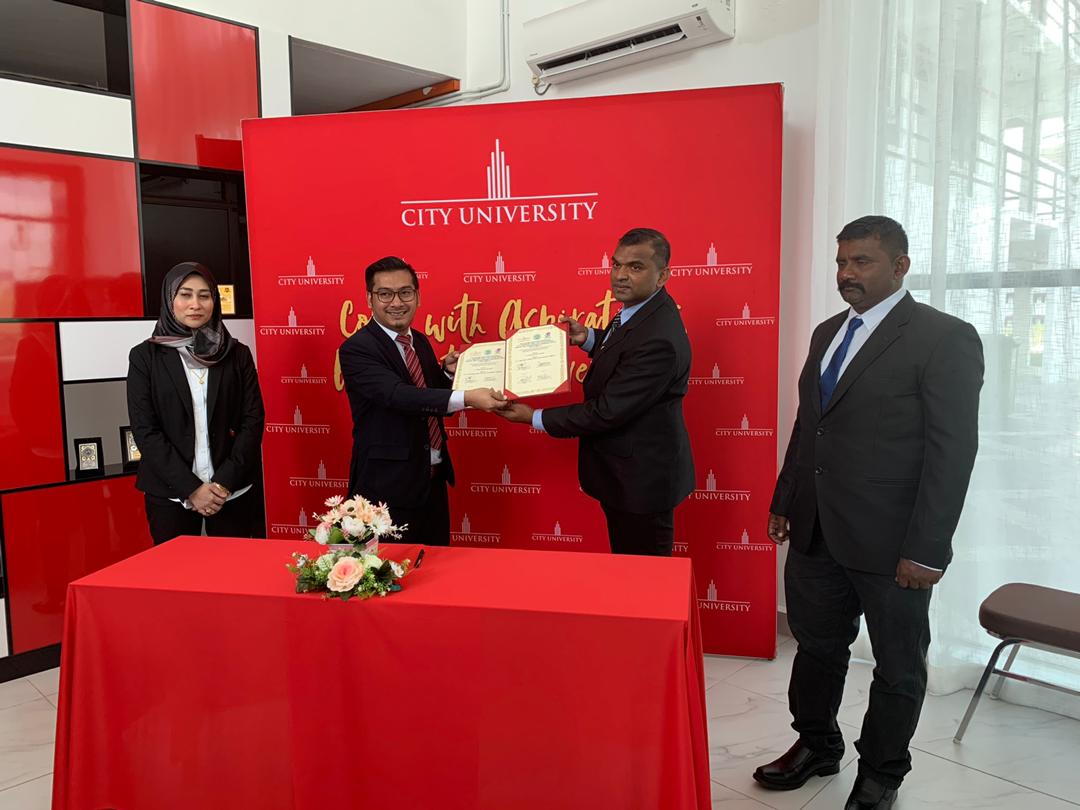The Malaysian Indian Congress: A Journey Through Nation-Building And Community Advocacy
Table of Contents
- The Genesis of the Malaysian Indian Congress
- MIC's Role in Malayan Independence and Nation-Building
- Navigating the Post-Independence Landscape: Challenges and Adaptations
- The Barisan Nasional Era: Alliance and Influence
- Modern Challenges and the Quest for Relevance
- Contributions and Criticisms: A Balanced Perspective
- The Future Trajectory of the Malaysian Indian Congress
- Conclusion: The Enduring Legacy and Evolving Role
The Genesis of the Malaysian Indian Congress
The roots of the Malaysian Indian Congress can be traced back to the post-World War II era, a period marked by burgeoning nationalism and a desire for self-determination across Malaya. Founded on August 3, 1946, in Kuala Lumpur, the MIC emerged from the collective consciousness of the Indian community, which felt increasingly marginalized and unrepresented in the burgeoning political landscape. Unlike the Malay and Chinese communities, who had established their respective political vehicles (UMNO and MCA), the Indian community, largely comprising descendants of laborers brought in during the British colonial period, lacked a unified voice. The initial impetus for forming the MIC was to address the socio-economic grievances and political aspirations of Indians in Malaya. Many were plantation workers living in dire conditions, with limited access to education, healthcare, and economic opportunities. The party's founders, led by John Thivy, envisioned an organization that would champion the rights of Indians, foster unity among the diverse Indian sub-ethnic groups (Tamils, Telugus, Malayalees, Sikhs, etc.), and integrate them meaningfully into the fabric of the emerging nation. The early days of the Malaysian Indian Congress were characterized by a focus on social welfare, labor rights, and advocating for citizenship for those who had made Malaya their home. This foundational period laid the groundwork for its future role as a key player in Malayan, and later Malaysian, politics.MIC's Role in Malayan Independence and Nation-Building
The Malaysian Indian Congress quickly realized that the path to improving the lives of its constituents lay in active participation in the independence movement. Under the leadership of figures like K.L. Devaser and subsequently Tun V.T. Sambanthan, the MIC shifted its focus from purely welfare-oriented activities to a more robust political agenda. It joined forces with the United Malays National Organisation (UMNO) and the Malayan Chinese Association (MCA) to form the Alliance Party in 1954. This tripartite coalition, representing the three major ethnic groups, became the primary vehicle for negotiating Malaya's independence from British rule. Tun V.T. Sambanthan, who led the Malaysian Indian Congress for nearly two decades (1955-1973), played a crucial role in shaping the party's direction during this critical juncture. His pragmatic leadership ensured that the Indian community's interests were represented in the constitutional negotiations leading up to independence in 1957. The MIC's participation in the Alliance demonstrated a commitment to communal harmony and power-sharing, a fundamental principle upon which modern Malaysia was built. This collaboration was vital in convincing the British that a stable, multi-ethnic government could govern an independent Malaya. The MIC's contribution during this period was not just about securing rights for Indians but also about fostering a sense of national identity that transcended ethnic lines, albeit within a framework of ethnic representation.Navigating the Post-Independence Landscape: Challenges and Adaptations
After independence, the Malaysian Indian Congress faced the complex task of translating the promises of nationhood into tangible improvements for the Indian community. The post-independence era presented a new set of challenges, particularly concerning socio-economic disparities and the integration of Indians into the mainstream economy. The MIC, as a partner in the ruling Alliance (which later became Barisan Nasional), had the responsibility to advocate for its community within the government structure.Economic Disparities and Community Upliftment
One of the most persistent challenges for the Malaysian Indian Congress has been addressing the economic marginalization of a significant portion of the Indian community. Many Indians remained trapped in the plantation sector, facing low wages, poor living conditions, and limited upward mobility. The New Economic Policy (NEP), introduced in 1971, aimed to restructure society to reduce poverty and eliminate the identification of race with economic function, primarily by uplifting the Malay community. While the NEP had noble intentions, its implementation sometimes inadvertently left the Indian community feeling overlooked, as policies often focused on the Malay-Chinese economic divide. The MIC consistently lobbied for greater economic opportunities for Indians, advocating for access to land, business licenses, government contracts, and educational scholarships. It initiated various programs aimed at skill development, entrepreneurship, and cooperative movements to empower Indian individuals and families. Despite these efforts, the economic gap remained a significant concern, leading to ongoing calls for more targeted interventions and equitable distribution of national wealth. The Malaysian Indian Congress has had to walk a fine line, supporting national development policies while simultaneously pushing for specific measures to benefit its community.Educational Advocacy and Cultural Preservation
Education has always been a cornerstone of the Malaysian Indian Congress's agenda. Recognizing education as a powerful tool for socio-economic upliftment, the MIC has consistently advocated for increased access to quality education for Indian children, from primary schools to tertiary institutions. This included lobbying for more places in public universities, scholarships, and the establishment of Indian-centric educational institutions. The party also played a crucial role in supporting Tamil vernacular schools, which are vital for preserving the language and cultural identity of the largest Indian sub-group in Malaysia. Beyond education, the MIC has been a staunch guardian of Indian culture, religion, and traditions. It has actively promoted the celebration of Indian festivals, supported the construction and maintenance of temples, and encouraged the teaching of Indian classical arts and languages. In a multicultural nation, maintaining one's distinct cultural identity while fostering national unity is a delicate balance. The Malaysian Indian Congress has consistently championed the idea that the diversity of cultures enriches Malaysia, and the Indian community's heritage is an integral part of this national mosaic.The Barisan Nasional Era: Alliance and Influence
For decades, the Malaysian Indian Congress was an integral component of the ruling Barisan Nasional (BN) coalition, which succeeded the Alliance Party. This long-standing partnership, particularly under the leadership of Tun S. Samy Vellu (who served as president for 31 years, 1979-2010), provided the MIC with direct access to power and influence within the government. MIC presidents typically held cabinet positions, often heading ministries relevant to community development, such as Public Works or Human Resources. Being part of the ruling coalition allowed the Malaysian Indian Congress to channel resources and implement policies directly benefiting the Indian community. This included funding for temples, community halls, and educational institutions, as well as advocating for specific policies related to employment, housing, and social welfare. The MIC's presence in BN was seen as crucial for ensuring that the Indian voice was heard at the highest levels of government and that their concerns were addressed in national policy-making. This period also saw the MIC expanding its grassroots network, establishing branches across the country to reach out to Indians in both urban and rural areas. While this alliance brought stability and a platform for advocacy, it also led to criticisms regarding the MIC's perceived inability to fully address the deep-seated issues faced by the community, often attributed to the constraints of coalition politics and the dominance of UMNO.Modern Challenges and the Quest for Relevance
The political landscape in Malaysia has undergone significant transformations in recent years, presenting unprecedented challenges for the Malaysian Indian Congress. The traditional communal-based politics that underpinned the Barisan Nasional's dominance has been increasingly challenged by a more fluid, issue-based, and multi-ethnic political consciousness.Shifting Political Tides and Electoral Performance
The watershed general election of 2008, and more profoundly 2018, saw a significant erosion of Barisan Nasional's power, ending its uninterrupted rule. This shift profoundly impacted the Malaysian Indian Congress. Indian voters, disillusioned by what they perceived as the MIC's inability to effectively champion their cause and the slow pace of change, began to shift their allegiance to opposition parties. The Hindraf movement in 2007, which highlighted the plight of marginalized Indians, underscored the deep-seated frustrations within the community and signaled a growing discontent with the MIC's traditional approach. The MIC's electoral performance declined significantly, losing many of its traditional strongholds and parliamentary seats. This forced the party to re-evaluate its strategies, leadership, and relevance in a new political era. The challenge for the Malaysian Indian Congress became not just about winning elections, but about reconnecting with a community that felt increasingly alienated and finding new ways to articulate their aspirations in a fragmented political environment.Internal Dynamics and Leadership Transitions
Like many long-standing political parties, the Malaysian Indian Congress has also faced its share of internal dynamics, including leadership transitions and factionalism. The departure of long-serving leaders and the emergence of new ones often bring about periods of introspection and strategic re-evaluation. These transitions are crucial for the party's ability to adapt to changing times and address contemporary issues. The need for renewal and a more dynamic approach has been a constant theme. Younger generations of Malaysian Indians, often more educated and globally aware, have different expectations from their political representatives. They are less bound by traditional loyalties and more likely to demand accountability, transparency, and effective policy outcomes. The Malaysian Indian Congress must navigate these internal pressures while simultaneously addressing external challenges to remain a viable and influential force in Malaysian politics.Contributions and Criticisms: A Balanced Perspective
The history of the Malaysian Indian Congress is marked by both significant contributions and valid criticisms. On the contribution front, the MIC undeniably played a crucial role in securing citizenship for Indians post-independence, ensuring their inclusion in the nation-building process. It provided a political platform for a community that might otherwise have been voiceless, advocating for their rights in education, employment, and cultural preservation. The party's efforts led to the establishment of various Indian-centric institutions, fostering a sense of identity and belonging. Through its participation in the ruling coalition, the MIC helped maintain inter-ethnic harmony, contributing to Malaysia's long period of political stability. However, the Malaysian Indian Congress has also faced considerable criticism. One of the most prominent criticisms is its perceived failure to adequately address the deep-seated socio-economic problems plaguing a significant portion of the Indian community. Critics argue that despite decades in power, the MIC did not sufficiently uplift the most marginalized, leading to persistent issues like poverty, limited access to higher education, and social ills. Some have accused the party of being too subservient to UMNO within the Barisan Nasional framework, thereby compromising its ability to forcefully advocate for Indian interests. Allegations of corruption, internal power struggles, and a lack of democratic processes within the party have also surfaced at various times, further eroding public trust. A balanced view acknowledges that while the MIC made strides, the complex nature of communal politics and the scale of the challenges meant that a complete transformation was an arduous task, often constrained by broader national policies and political realities.The Future Trajectory of the Malaysian Indian Congress
In an increasingly complex and multi-polar political landscape, the Malaysian Indian Congress faces a critical juncture. Its future trajectory hinges on its ability to adapt, innovate, and reconnect with the evolving aspirations of the Malaysian Indian community. The days of guaranteed electoral success through coalition membership are over, necessitating a more proactive and responsive approach.Engaging the Younger Generation and New Agendas
A key challenge for the Malaysian Indian Congress is to effectively engage the younger generation of Malaysian Indians. This demographic is often more educated, urbanized, and less inclined to vote purely along ethnic lines. They are concerned with issues such as good governance, economic opportunities, social justice, and meritocracy, rather than just ethnic representation. For the MIC to remain relevant, it must articulate a compelling vision that resonates with these contemporary concerns. This means moving beyond traditional ethnic-based appeals and embracing a more inclusive and issue-driven agenda. The Malaysian Indian Congress needs to focus on empowering the Indian youth through skill development, digital literacy, and entrepreneurial support. It must also champion policies that address systemic inequalities, regardless of ethnicity, while still ensuring that the unique challenges faced by the Indian community are not overlooked. Embracing new communication strategies, leveraging social media, and fostering greater transparency within the party are also crucial for attracting and retaining the support of a new generation. The party's ability to innovate its leadership, policy frameworks, and outreach methods will determine its long-term viability and influence in Malaysian politics.Conclusion: The Enduring Legacy and Evolving Role
The Malaysian Indian Congress has traversed a long and often challenging path since its inception in 1946. From being a crucial voice in the independence movement to its decades as a key component of the ruling Barisan Nasional, the MIC has played an undeniable role in shaping the destiny of the Malaysian Indian community and, by extension, the nation itself. Its legacy is one of advocacy, cultural preservation, and a persistent effort to uplift a community that has often faced unique socio-economic hurdles. While the party has faced significant criticisms and electoral setbacks in recent years, its continued existence underscores the enduring need for a platform that represents the interests of Malaysian Indians. The challenges ahead are formidable, requiring the Malaysian Indian Congress to reinvent itself, embrace new political realities, and forge a stronger connection with a diverse and evolving community. Its success will depend on its ability to champion universal values of justice and equality while simultaneously addressing the specific needs of Malaysian Indians, ensuring their rightful place in a prosperous and harmonious Malaysia. The journey of the MIC is far from over; it continues to be a vital chapter in the ongoing narrative of Malaysia's multicultural democracy. What are your thoughts on the role of ethnic-based political parties in a multicultural nation like Malaysia? Share your perspectives in the comments below, and explore other articles on our site for more insights into Malaysian politics and society.
Malaysian Indian Congress Johor Youth

Malaysian Indian Congress Johor Youth

Malaysian Indian Congress Johor Youth